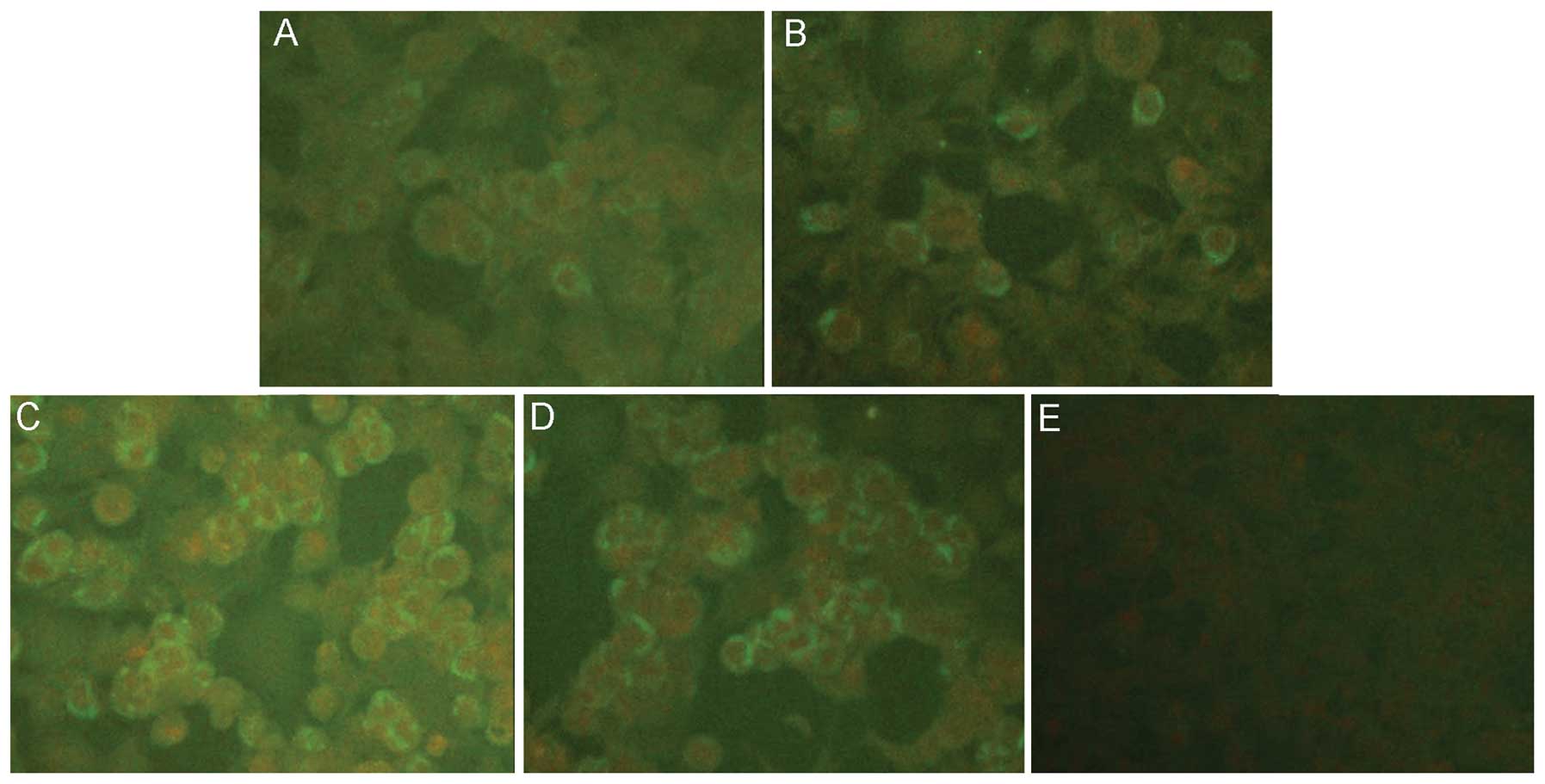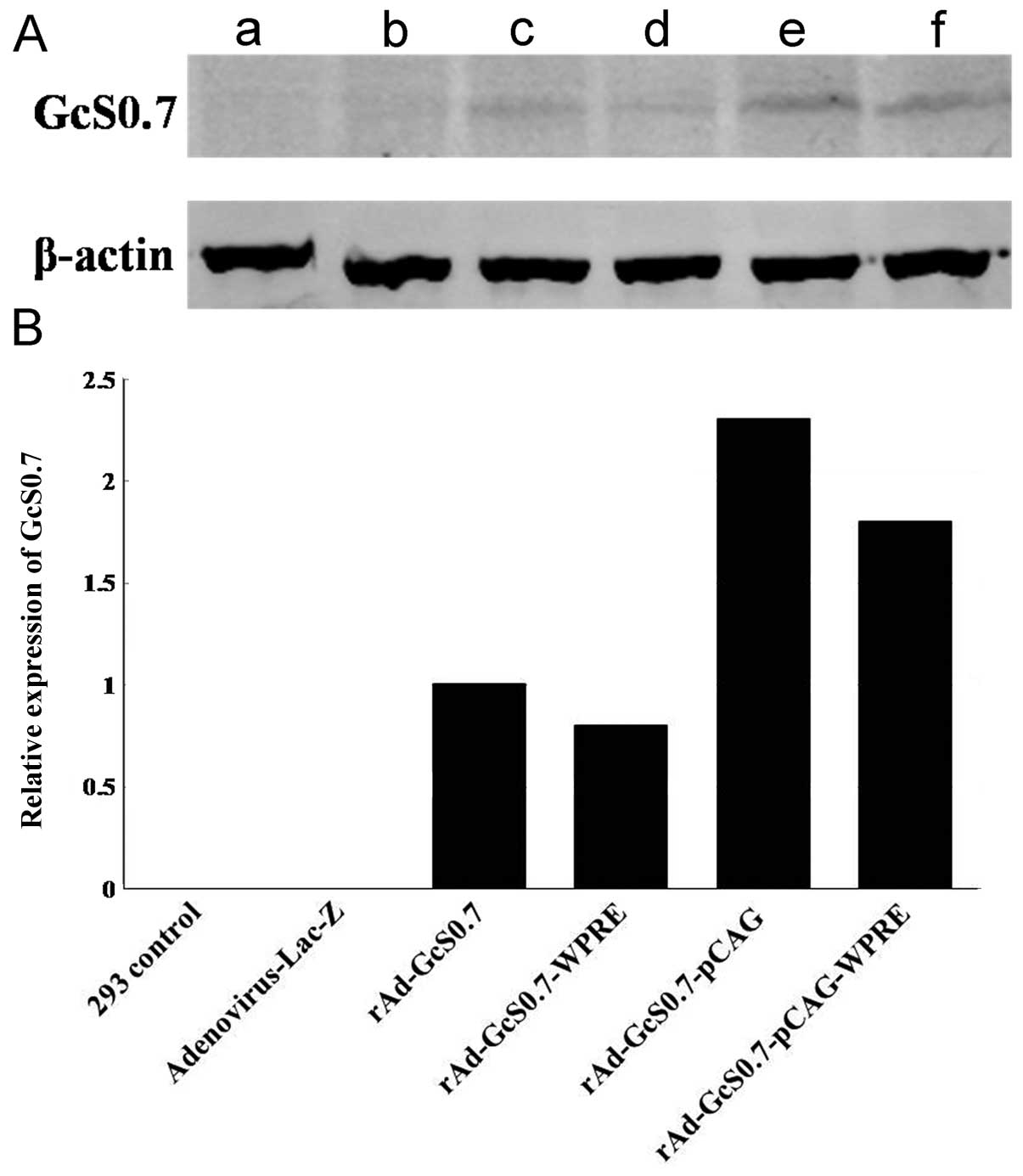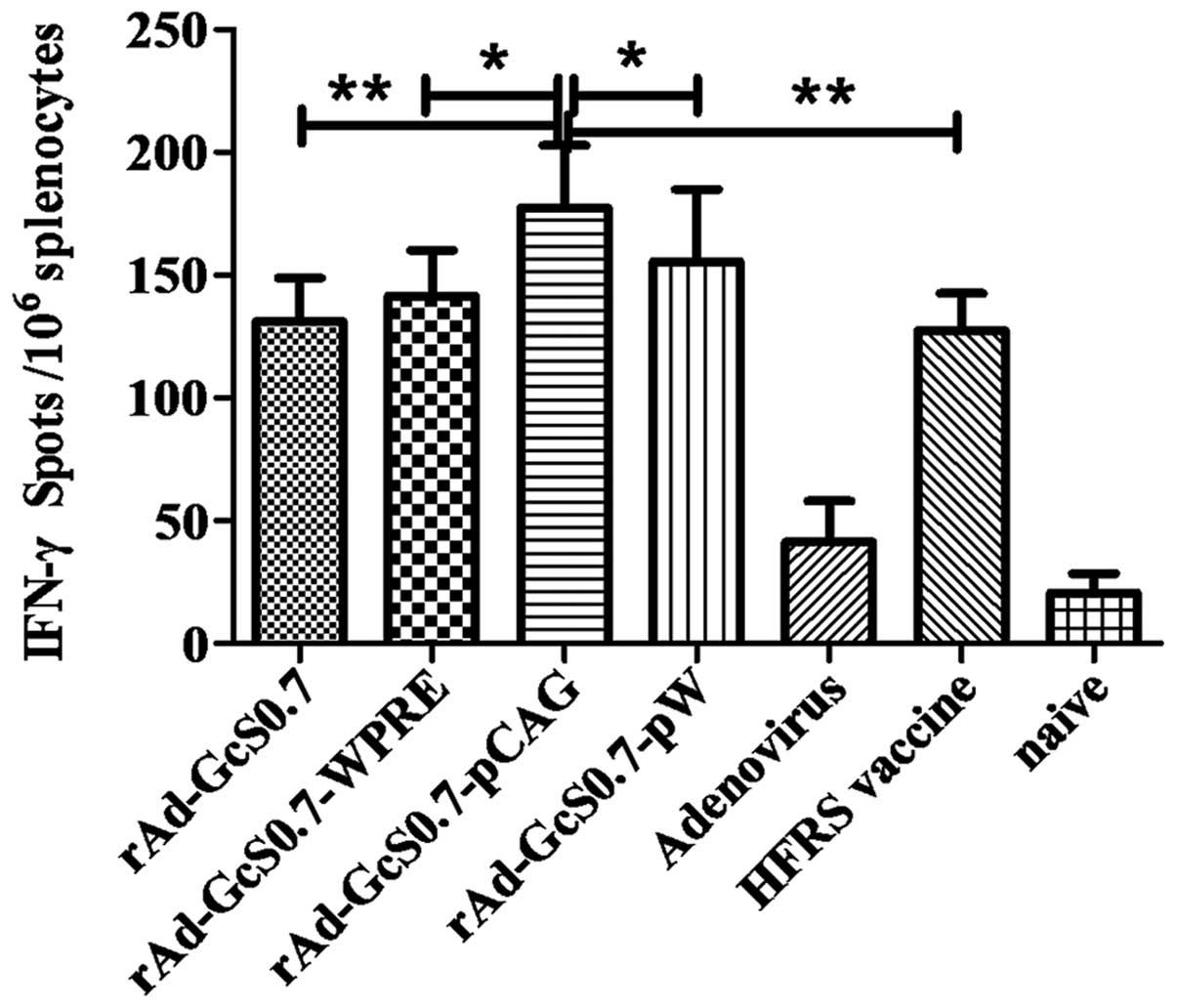|
1
|
Hepojoki J, Strandin T, Lankinen H and
Vaheri A: Hantavirus structure - molecular interactions behind the
scene. J Gen Virol. 93:1631–1644. 2012. View Article : Google Scholar : PubMed/NCBI
|
|
2
|
Plyusnin A, Vapalahti O and Vaheri A:
Hantaviruses: genome structure, expression and evolution. J Gen
Virol. 77:2677–2687. 1996. View Article : Google Scholar
|
|
3
|
Charrel RN, Coutard B, Baronti C, et al:
Arenaviruses and hantaviruses: from epidemiology and genomics to
antivirals. Antiviral Res. 90:102–114. 2011. View Article : Google Scholar : PubMed/NCBI
|
|
4
|
Hart CA and Bennett M: Hantavirus
infections: epidemiology and pathogenesis. Microbes Infect.
1:1229–1237. 1999. View Article : Google Scholar : PubMed/NCBI
|
|
5
|
Clement JP: Hantavirus. Antiviral Res.
57:121–127. 2003. View Article : Google Scholar : PubMed/NCBI
|
|
6
|
Kruger DH, Schonrich G and Klempa B: Human
pathogenic hantaviruses and prevention of infection. Hum Vaccin.
7:685–693. 2011. View Article : Google Scholar : PubMed/NCBI
|
|
7
|
Simmons JH and Riley LK: Hantaviruses: an
overview. Comp Med. 52:97–110. 2002.
|
|
8
|
Kariwa H, Yoshimatsu K and Arikawa J:
Hantavirus infection in East Asia. Comp Immunol Microbiol Infect
Dis. 30:341–356. 2007. View Article : Google Scholar
|
|
9
|
Schmaljohn C: Vaccines for hantaviruses.
Vaccine. 27(Suppl 4): D61–D64. 2009. View Article : Google Scholar
|
|
10
|
Khaiboullina SF and St Jeor SC: Hantavirus
immunology. Viral Immunol. 15:609–625. 2002. View Article : Google Scholar : PubMed/NCBI
|
|
11
|
Van Epps HL, Schmaljohn CS and Ennis FA:
Human memory cytotoxic T-lymphocyte (CTL) responses to Hantaan
virus infection: identification of virus-specific and
cross-reactive CD8(+) CTL epitopes on nucleocapsid protein. J
Virol. 73:5301–5308. 1999.PubMed/NCBI
|
|
12
|
Yoshimatsu K, Yoo YC, Yoshida R, Ishihara
C, Azuma I and Arikawa J: Protective immunity of Hantaan virus
nucleocapsid and envelope protein studied using
baculovirus-expressed proteins. Arch Virol. 130:365–376. 1993.
View Article : Google Scholar
|
|
13
|
Xue X, Xu Z and Ma W: Expression of
truncated HTNV nucleoprotein and analysis of antigenic epitope.
Virol Sin. 15:220–225. 2000.
|
|
14
|
Zhang FL, Wu XA, Luo W, et al: The
expression and genetic immunization of chimeric fragment of Hantaan
virus M and S segments. Biochem Biophys Res Commun. 354:858–863.
2007. View Article : Google Scholar : PubMed/NCBI
|
|
15
|
Luo W, Zhang F, Yan Y, et al:
Immunological properties of a fusion protein containing
nucleocapsid protein and glycoprotein Gn of Hantaan virus. Acta
Virol. 52:243–249. 2008.PubMed/NCBI
|
|
16
|
Gribaudo G, Ravaglia S, Caliendo A, et al:
Interferons inhibit onset of murine cytomegalovirus immediate-early
gene transcription. Virology. 197:303–311. 1993. View Article : Google Scholar : PubMed/NCBI
|
|
17
|
Donello JE, Loeb JE and Hope TJ: Woodchuck
hepatitis virus contains a tripartite posttranscriptional
regulatory element. J Virol. 72:5085–5092. 1998.PubMed/NCBI
|
|
18
|
Real G, Monteiro F, Burger C and Alves PM:
Improvement of lentiviral transfer vectors using cis-acting
regulatory elements for increased gene expression. Appl Microbiol
Biotechnol. 91:1581–1591. 2011. View Article : Google Scholar : PubMed/NCBI
|
|
19
|
Xu ZL, Mizuguchi H, Mayumi T and Hayakawa
T: Woodchuck hepatitis virus post-transcriptional regulation
element enhances transgene expression from adenovirus vectors.
Biochim Biophys Acta. 1621:266–271. 2003. View Article : Google Scholar : PubMed/NCBI
|
|
20
|
Zufferey R, Donello JE, Trono D and Hope
TJ: Woodchuck hepatitis virus posttranscriptional regulatory
element enhances expression of transgenes delivered by retroviral
vectors. J Virol. 73:2886–2892. 1999.
|
|
21
|
Garg S, Oran AE, Hon H and Jacob J: The
hybrid cytomegalovirus enhancer/chicken beta-actin promoter along
with woodchuck hepatitis virus posttranscriptional regulatory
element enhances the protective efficacy of DNA vaccines. J
Immunol. 173:550–558. 2004. View Article : Google Scholar
|
|
22
|
Li PY, Yu L, Wu XA, et al: Modification of
the adenoviral transfer vector enhances expression of the
Hantavirus fusion protein GnS0.7 and induces a strong immune
response in C57BL/6 mice. J Virol Methods. 179:90–96. 2012.
View Article : Google Scholar : PubMed/NCBI
|
|
23
|
Xu Z, Wei L, Wang L, Wang H and Jiang S:
The in vitro and in vivo protective activity of monoclonal
antibodies directed against Hantaan virus: potential application
for immunotherapy and passive immunization. Biochem Biophys Res
Commun. 298:552–558. 2002. View Article : Google Scholar
|
|
24
|
Zhang F, Liu Y, Yu L, et al: Construction
and identification of recombinant adenovirus containing chimeric
gene G2S0.7 of Hantaan virus. J Fourth Mil Med Univ. 25:1057–1060.
2004.
|
|
25
|
Kruger DH, Ulrich R and Lundkvist AA:
Hantavirus infections and their prevention. Microbes Infect.
3:1129–1144. 2001. View Article : Google Scholar : PubMed/NCBI
|
|
26
|
Hooper JW and Li D: Vaccines against
hantaviruses. Curr Top Microbiol Immunol. 256:171–191.
2001.PubMed/NCBI
|
|
27
|
Schonrich G, Rang A, Lutteke N, Raftery
MJ, Charbonnel N and Ulrich RG: Hantavirus-induced immunity in
rodent reservoirs and humans. Immunol Rev. 225:163–189. 2008.
View Article : Google Scholar : PubMed/NCBI
|
|
28
|
Tischler ND, Gonzalez A, Perez-Acle T,
Rosemblatt M and Valenzuela PD: Hantavirus Gc glycoprotein:
evidence for a class II fusion protein. J Gen Virol. 86:2937–2947.
2005. View Article : Google Scholar : PubMed/NCBI
|
|
29
|
Klein R, Ruttkowski B, Knapp E, Salmons B,
Gunzburg WH and Hohenadl C: WPRE-mediated enhancement of gene
expression is promoter and cell line specific. Gene. 372:153–161.
2006. View Article : Google Scholar : PubMed/NCBI
|
|
30
|
Richardson JS, Yao MK, Tran KN, et al:
Enhanced protection against Ebola virus mediated by an improved
adenovirus-based vaccine. PLoS One. 4:e53082009. View Article : Google Scholar : PubMed/NCBI
|
|
31
|
Lehmann PV and Zhang W: Unique strengths
of ELISPOT for T cell diagnostics. Methods Mol Biol. 792:3–23.
2012. View Article : Google Scholar : PubMed/NCBI
|















